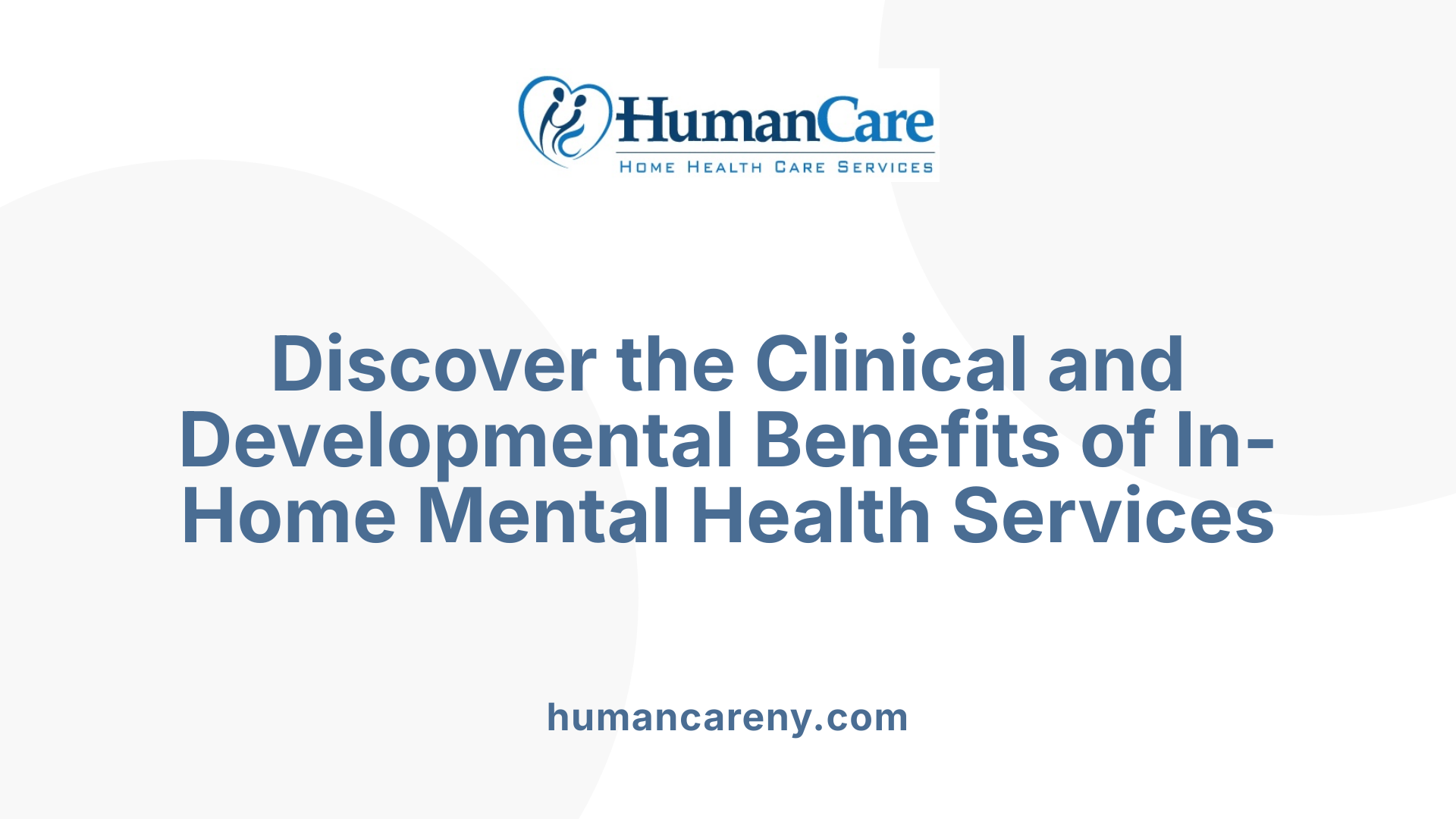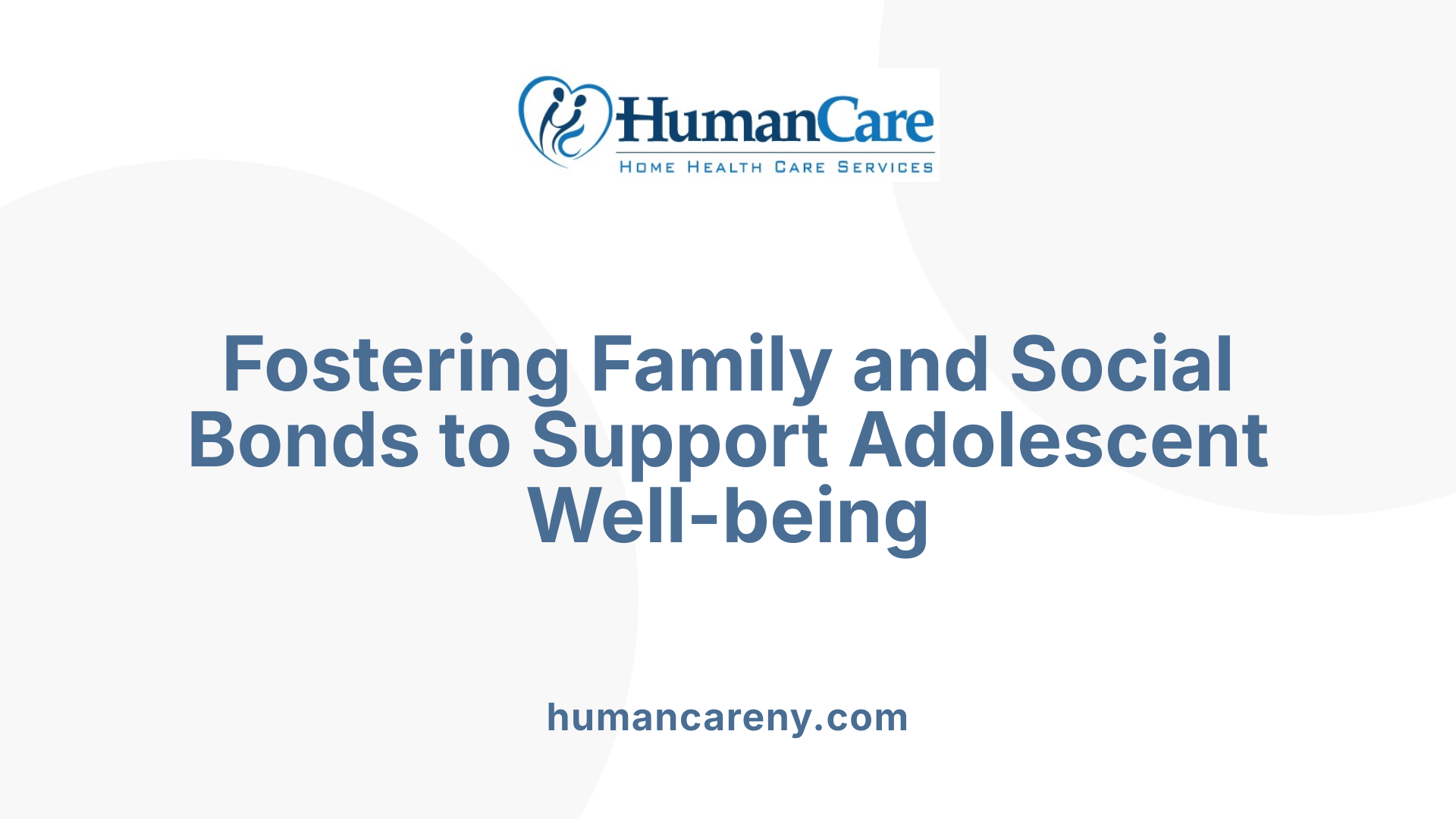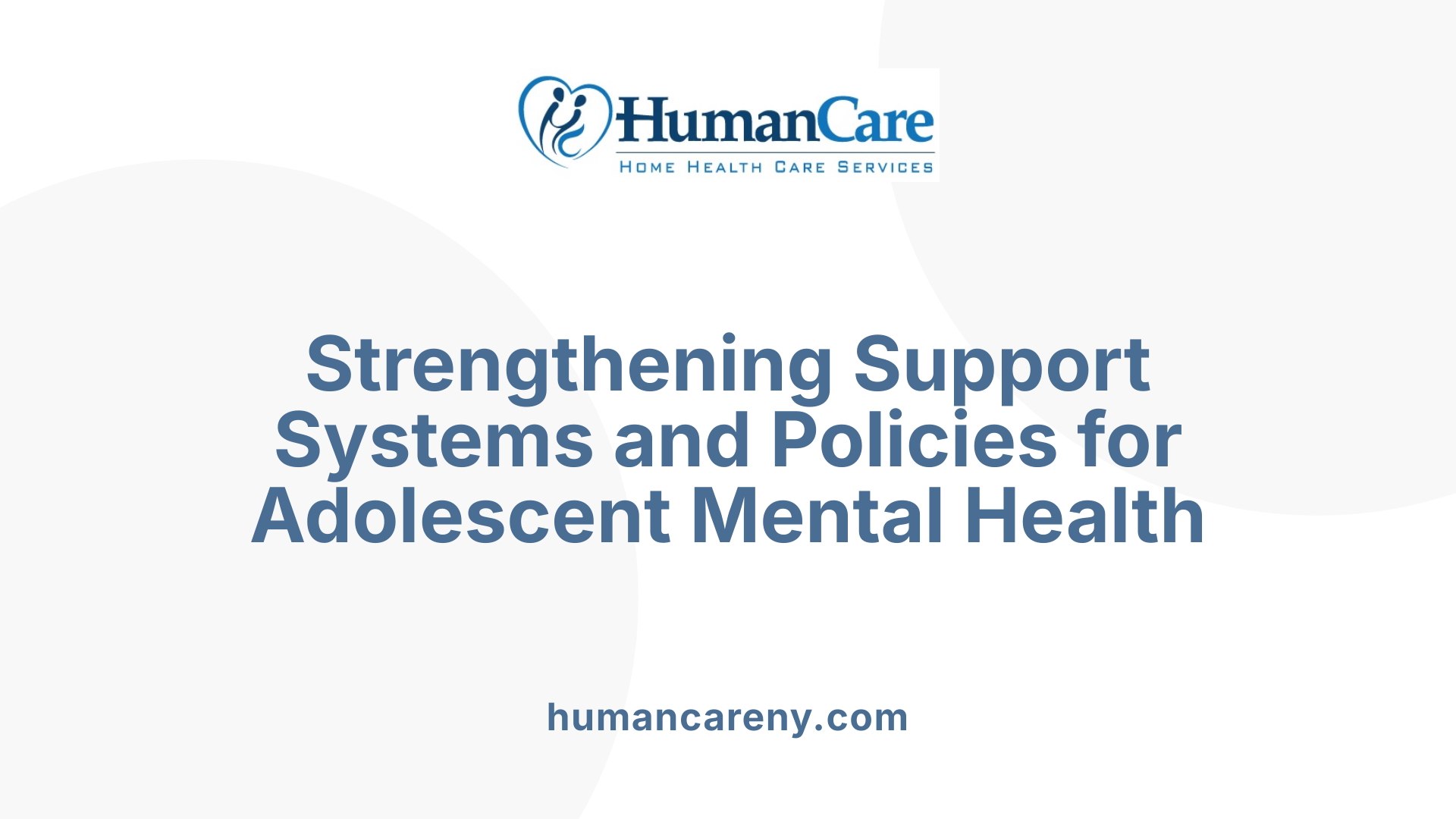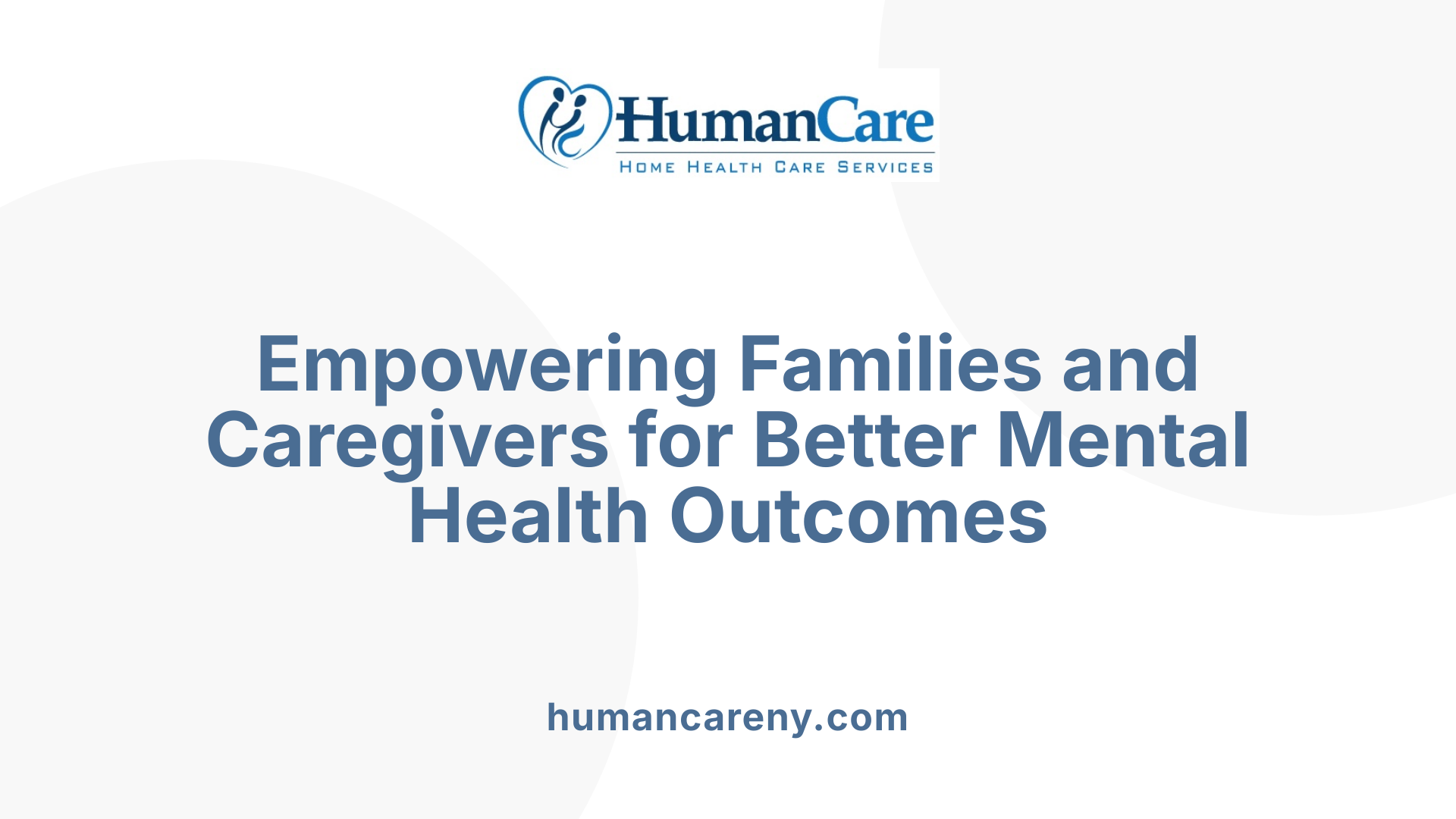The Power of In-Home Care in Supporting Youth Mental Well-Being
In-home mental health care is emerging as a vital approach for supporting adolescents with mental health needs. By delivering tailored, accessible interventions within the familiar environment of their home, this approach not only improves clinical outcomes but also enhances social connectedness and family resilience. This article explores the multifaceted benefits of in-home mental health services, the policies that support them, and how they foster healthier, more connected communities for youth.
Clinical and Developmental Advantages of In-Home Mental Health Services

What are the clinical, emotional, and developmental benefits of in-home mental health care for adolescents?
In-home mental health services provide a range of benefits that extend across clinical, emotional, and developmental domains, making them a vital component of adolescent mental health care. One of the main advantages is the personalized nature of care within familiar settings. When therapy is conducted at home, adolescents feel more comfortable, which fosters openness and trust between them and healthcare providers. This environment encourages honest communication, leading to more accurate assessments and effective interventions.
The familiarity of the home setting also reduces common barriers such as transportation difficulties and scheduling conflicts, thereby increasing treatment adherence and engagement. Care delivered in natural surroundings has been shown to support emotional regulation, helping adolescents develop healthier coping strategies for managing stress, anxiety, and other emotional challenges.
Evidence-based therapies are often incorporated into in-home programs, including cognitive-behavioral therapy (CBT), outdoor-based therapies like surf therapy, animal-assisted therapy, and forest therapy. These approaches have demonstrated success in reducing internalizing difficulties such as depression and anxiety, and in promoting positive emotional responses.
Social skills and self-esteem development are central to these services. Group formats and outdoor activities foster peer support and social interaction, which are essential for emotional growth. These interventions facilitate resilience and help adolescents build self-confidence, improve communication skills, and foster independence.
Overall, in-home mental health care serves as an effective alternative to inpatient treatment, providing tailored, accessible support that nurtures emotional well-being and promotes healthy developmental trajectories. Such services can enhance the overall quality of life for adolescents by integrating therapeutic efforts into their daily environment, thereby fostering a seamless path to recovery and growth.
| Aspect | Benefits | Details |
|---|---|---|
| Personalized Care | Tailored interventions | Based on adolescent's specific needs, strengths, and environment |
| Engagement & Trust | Improved rapport | Comfortable setting encourages openness and cooperation |
| Evidence-Based Therapies | Proven effectiveness | CBT, outdoor therapies like surf, animal-assisted, and forest therapies |
| Emotional & Social Development | Building resilience | Enhances emotional regulation, social skills, and self-esteem |
| Accessibility & Continuity | Easy access | Reduces barriers, promotes consistent treatment |
| Group & Outdoor Activities | Peer support | Promotes social interaction, social problem-solving |
In summary, in-home mental health services harness the benefits of community-based, family-centered care to foster adolescents' emotional health and developmental progress efficiently and compassionately.
Enhancing Care Through Family and Social Connectedness

How do in-home or medical home services support adolescent mental health?
In-home and medical home services are vital in promoting adolescent mental health by ensuring coordinated, accessible, and continuous care. These services facilitate early detection of mental health issues through regular monitoring and assessment, which can help prevent crises and reduce hospitalizations.
Caregivers are empowered through these services with strategies to better understand their child's social environment and support social development. Home care nurses and providers deliver personalized education, help families navigate digital social platforms safely, and support adherence to treatment plans, strengthening the family’s role in recovery.
These services address social isolation by helping adolescents build and maintain meaningful relationships with family, peers, and community. They also support social skill development and self-efficacy, encouraging young people to actively participate in social interactions and develop resilience.
Moreover, addressing the family dynamic and social environment creates a nurturing, stable setting that enhances emotional well-being. A strong family involvement provides a sense of security and trust, essential for effective mental health treatment.
The comprehensive nature of medical home services, which include counseling, medication management, and social support, aligns with recovery models like CHIME (Connectedness, Hope, Identity, Meaning, and Empowerment). This approach nurtures hope and connectedness, fostering long-term resilience.
Overall, integrating social development strategies with clinical care contributes significantly to sustaining mental health improvements and supports adolescents' journey toward recovery.
Role of Support Systems, Policies, and Programs

What support systems, policies, or programs are available to enhance in-home mental health care for adolescents?
In-home mental health care for adolescents is supported by a combination of federal, state, and community programs designed to facilitate access and improve outcomes. Medicaid, as a primary payer, covers a variety of services including psychiatric evaluations, symptom and medication management, and counseling delivered in the home by specialized professionals such as psychiatric nurses. These services aim to reduce emergency visits, foster independence, and support ongoing treatment while allowing teens to stay in familiar environments.
State initiatives augment federal efforts by introducing innovative programs like local coordination efforts, therapeutic support teams, and crisis intervention models. For example, some states implement community-based services inspired by the "system of care" framework, promoting family-centered, culturally competent, and accessible care. Additionally, policies like the Individuals with Disabilities Education Act (IDEA) support mental health within schools, providing avenues for early identification and intervention.
Organizations such as NAMI, CDC, and SAMHSA offer vital resources, including mental health screenings for depression, suicide risk, and substance use. These screenings help identify at-risk youth early, enabling timely treatment. Supportive services such as Assertive Community Treatment (ACT), crisis response teams, and recovery support systems further coordinate treatment plans for adolescents and their families. Education policies also facilitate access to mental health services on college campuses, through counseling programs and disability accommodations.
Ultimately, these comprehensive support systems work synergistically to create an environment where adolescents can receive effective in-home mental health care, fostering resilience and stability.
How do health initiatives like Medicaid support in-home mental health services for youth?
Medicaid plays a significant role in expanding in-home mental health services for youth by providing funding mechanisms and policy supports that increase access and quality of care. Many states leverage Medicaid waivers, such as the Early and Periodic Screening, Diagnostic, and Treatment (EPSDT) program, to facilitate early screening and intervention for mental health issues among children and adolescents.
State-specific programs further enhance service availability. For instance, Massachusetts offers community-based mental health services that focus on family-centered care, ensuring adolescents receive tailored support directly within their home environments. Texas has implemented local coordination efforts to make mental health support more accessible and responsive to individual needs.
Federal agencies, including SAMHSA and the Centers for Medicare & Medicaid Services (CMS), develop guidelines, provide funding, and promote best practices such as integrated care models. These models combine behavioral health, social services, and primary care, fostering a holistic approach that is essential for effective in-home treatment.
Moreover, Medicaid’s emphasis on community-based "system of care" models supports peer support, family therapy, crisis response, and mobile outreach teams. These initiatives are designed to prevent crises, reduce reliance on inpatient services, and maintain adolescents in their homes whenever possible.
Overall, health initiatives linked to Medicaid not only fund essential services but also shape policies that improve the accessibility, affordability, and quality of in-home mental health care for young people.
| Aspect | Details | Additional Notes |
|---|---|---|
| Funding mechanisms | Medicaid waivers, EPSDT, state-funded programs | Expand early screening and personalized care plans |
| Service types | Psychiatric evaluation, counseling, medication support | Delivered at home or community settings |
| Support models | Community-based, family-centered, integrated care | Promotes stability and continuity in treatment |
| Policy initiatives | Federal guidelines, state programs, IDEA | Enhance early intervention, reduce barriers |
| Resources | SAMHSA, CDC, NAMI | Provide education, technical assistance, and advocacy |
This layered approach ensures adolescents receive necessary mental health services at home, improving overall outcomes and supporting their developmental needs.
Support for Caregivers and Families

How does in-home mental health care influence family dynamics and social connectedness?
Providing mental health services within the home environment can significantly strengthen family bonds and foster social connectedness. When care is delivered at home, caregivers are more actively involved in the treatment process, which can deepen their understanding of their child's needs and improve communication within the family.
This approach not only enhances emotional support but also helps reduce feelings of social isolation and stigma often associated with mental health issues. Families gain access to tailored interventions that fit seamlessly into daily routines, making it easier to maintain consistency in treatment.
However, caregiving demands can sometimes lead to physical and psychological strain, especially in families managing complex or severe issues. These stresses can negatively affect caregiver well-being and their ability to engage socially.
Support systems like peer networks, culturally sensitive services, and community resources are essential to help caregivers cope. When adequately supported, in-home mental health care can markedly improve family relationships and promote social cohesion, contributing positively to the overall well-being of both the adolescent and their caregivers.
What are the benefits of in-home mental health care for adolescents?
In-home mental health services tailored for adolescents provide several notable advantages. First, treatment in a familiar, safe environment encourages greater comfort and participation from the youth, which can lead to improved therapy outcomes.
Clinicians can directly observe environmental factors affecting behavior and emotional health, allowing for more precise and relevant interventions. This setting is particularly beneficial for addressing issues like trauma, depression, or behavioral challenges early, preventing potential crises or the need for hospitalization.
Furthermore, in-home care facilitates stronger relationships between adolescents and their therapists, fostering trust and open communication. It also helps in addressing family dynamics directly, promoting unity and understanding.
Accessibility is another key benefit, especially for families who face barriers to traditional outpatient clinic visits, such as transportation issues or stigma. Overall, in-home mental health therapy enhances treatment engagement, supports early intervention, and strengthens familial support systems, leading to better mental health outcomes for adolescents.
| Aspect | Benefits | Additional Notes |
|---|---|---|
| Environment | Familiar and comfortable setting | Aids engagement and openness |
| Observation | Direct insight into home and social context | Tailors interventions effectively |
| Accessibility | Easier to reach for remote or busy families | Reduces barriers to care |
| Relationship | Builds trust between teen and therapist | Facilitates family involvement |
| Outcomes | Prevents escalation and hospitalization | Supports early intervention |
How do caregiver involvement and family-centered policies improve adolescent mental health?
Supporting caregivers early in their child's mental health journey is crucial. Family-centered policies, such as paid parental leave, access to quality childcare, and family benefits, create a stable foundation for emotional and psychological development.
Paid parental leave allows mothers to recover mentally and physically after birth, while fostering father-child bonding and shared responsibilities. Affordable, quality childcare supports parents' ability to engage work and maintain family relationships, which benefits child development.
Access to comprehensive mental health services through programs like Medi-Cal or Medicaid ensures that families can get timely assessment and treatment. These programs often include outpatient, inpatient, and community-based services tailored to children's needs.
Community mental health services involve assessments, crisis intervention, therapy, and case management, providing a holistic approach. Early intervention helps children develop social skills, manage emotions, and succeed in their environments.
How important are systemic and policy changes in supporting youth with complex needs?
Systemic changes involve multiple agencies, policies, and stakeholders working together. These collaborations aim to ensure seamless transitions between different levels of care, reduce hospitalization rates, and foster community reintegration.
For instance, Medicaid programs can support community stabilization by involving caregivers in discharge planning and offering step-down care models, such as daytime community programs with evening resettlements home.
States like West Virginia and Arizona have simplified access points and involve families actively in care planning, demonstrating effective systemic efforts. These policies reduce barriers, enhance care quality, and promote recovery.
Who provides mental health services through Medicaid and community programs?
In California, the Medi-Cal program offers specialized mental health services, including outpatient and inpatient care through county mental health plans. Eligibility depends on age, diagnosis, and functional impairment.
Children and adolescents aged 3-17 can access tailored services like counseling, case management, skills training, and crisis intervention. Referrals often come from schools, doctors, or family members.
Community mental health services aim to provide support within the child's living environment, helping families build resilience and recover from mental health challenges. These services are vital in ensuring early identification and comprehensive care for youth in need.
| Program | Service Type | Description | Target Age/Population |
|---|---|---|---|
| Medi-Cal SMHS | Outpatient/Inpatient | Provides comprehensive mental health care | Under 21, especially 3-17 |
| Community Services | Crisis, therapy, case management | Home or clinic-based support | All children/youth with mental health needs |
| Residential Youth Care | Specialized placements | Focuses on complex internalizing difficulties | Vulnerable youth with high needs |
Providing accessible, tailored mental health services through these programs is essential to supporting adolescent recovery and long-term well-being.
Funding and Policy Support for Equitable Access

How do health initiatives like Medicaid support in-home mental health services for youth?
Health initiatives such as Medicaid are vital in providing and expanding in-home mental health services for young people. Through comprehensive coverage, Medicaid funds a variety of behavioral health programs designed to meet the needs of adolescents and their families. Many states leverage Medicaid waivers and flexibilities, including the Early and Periodic Screening, Diagnostic, and Treatment (EPSDT) service, to broaden access to preventive and early intervention services.
For instance, states like Massachusetts have developed community-based programs that connect youth with mental health care in their own homes and communities. Texas employs a coordinated local approach where providers focus on tailored, family-centered services that actively involve caregivers in treatment plans. These initiatives aim to reduce reliance on inpatient care and foster environments conducive to recovery.
Federal agencies such as the Substance Abuse and Mental Health Services Administration (SAMHSA) and the Centers for Medicare & Medicaid Services (CMS) play crucial roles. They set guidelines, develop resources, and promote best practices for mental health care. Their efforts prioritize early screening, prevention, and treatment, which can prevent crises and reduce long-term reliance on more intensive services.
A significant aspect of Medicaid’s support involves advocating for integrated, community-based "system of care" models. These models emphasize collaboration among health providers, schools, families, and peer supporters to deliver comprehensive, accessible care that fits the unique needs of each youth.
State policies further enhance Medicaid’s impact. For example, some states have streamlined eligibility processes for mental health services and increased funding for home-based interventions. Overall, Medicaid’s expanding role, coupled with federal and state initiatives, greatly enhances the availability, affordability, and quality of in-home mental health services, ultimately supporting better mental health outcomes for adolescents.
| Policy Area | Description | Impact on Youth |
|---|---|---|
| Medicaid expansion | Broader eligibility and service coverage | Increased access to in-home mental health services |
| State policies | Local regulations and funding strategies | Tailored interventions and reduced barriers |
| Federal funding | Grants and guidelines from CMS, SAMHSA | Standardization and quality improvement |
This synergy between federal, state, and community efforts ensures that mental health services are more accessible, responsive, and effective for young people, promoting recovery and resilience.
Fostering Mental Well-Being Through Home-Based Interventions
As research and practice demonstrate, in-home mental health services are a cornerstone in supporting adolescents’ emotional and social development. They provide a personalized, accessible, and family-centered approach that promotes recovery, resilience, and social connectedness. Continued investment in policy, workforce development, and innovative delivery models is essential to ensuring that all youth can benefit from effective, equitable mental health care within their homes. Strengthening these supports will pave the way for healthier, more connected generations.
References
- Benefits of medical home care reaching beyond chronically ill teens
- The Role of Caregivers in Promoting Connectedness in Youth with ...
- Strengthening care for families and supporting mental health - Unicef
- Effectiveness of mental-health interventions for children and ...
- Mental Health Home Care - Amedisys
- Benefits of Outpatient Mental Health Treatment for Adolescents
- How Medicaid is Making a Difference for Kids with Complex ...
- Specialty Mental Health Services for Children and Youth - DHCS
- Children's Mental Health | Texas Health and Human Services



